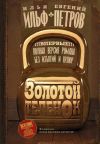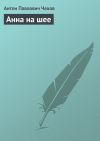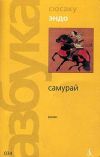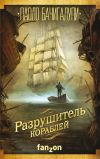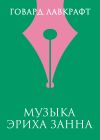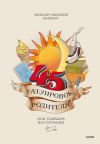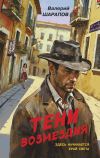Текст книги "Back to the past"
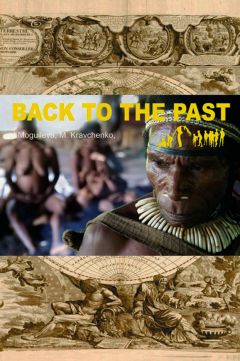
Автор книги: Инна Метельская-Шереметьева
Жанр: Жанр неизвестен
Возрастные ограничения: +12
сообщить о неприемлемом содержимом
Текущая страница: 1 (всего у книги 9 страниц) [доступный отрывок для чтения: 2 страниц]
A documentary-fictional tale
From the author
Dear reader,
It is my pleasure to present to you a documentary-fictional tale of an amazing trip which was undertaken by some of my friends in 2005–2006.
At the moment of the events being described in the book, our compatriots had practically not visited or studied the territory of Irian Jaya (one of the Indonesian states on the island of New Guinea). Therefore, the book’s main characters are pioneers in a certain sense of the word. All the facts, events and people mentioned in the story are real. I only assumed the responsibility of completing the images of the main characters, and I had a good reason to do so. During the expedition, the travelers did not make any voice recordings. What I had at my disposal was Alexey Semyonov’s documentary diary, an archive of unique photos and videos brought back from New Guinea, and my friends’ stories, which I enjoyed listening to every word of during long winter evenings. I took a risk and presented these stories with a certain portion of fiction added to them in order to be able to get across to the readers all of the emotional intensity and all those nuances of impressions and experiences which I felt throughout our conversations.
The book is composed of several separate stories of the expedition’s participants. Their interests here were taken into consideration. This is why they are all fully legitimate co-authors of the book “Return to the Past”.
Thus, Andrey and Alexander, in particular, took photos and shot video of those places and tribes which the book tells you about. They recorded the main events, locations and dates along the route. Looking at their own pictures afterwards, they very vividly and graphically described those nuances which had slipped by their cameras.
Following long-standing tradition, Alexey studied the everyday life and ceremonies, as well as explored the traditions and rituals, of the ancient tribes.
Michael was interested in the specific historic, geographic and ethnographic facts and special issues of the native philosophy which exists as if in parallel to our own world, next to it… or beyond it to be precise…
This is why the reader of this book will be able to observe the chronological events described in different chapters as well as a whole range of ‘deviations’ which will help to make the story of the journey more vivid and picturesque, and fill it with documentary facts.
I hope you enjoy the story of the trip to the Vanishing World of Irian Jaya.
Inna M. (on behalf of the co-authors).
Introduction
Since the world managed to fit into a laptop screen and tourist agencies, as if in collusion, promised to provide us with guaranteed spots in a five-star beach heaven during any season, life has become absolutely dull.
You just have to go on-line to look into such an unlimited range of opportunities that was far beyond Mr. Cook’s, Mr. Magellan’s or Mr. Mikluho-Maklay’s dreams. Longing for new discoveries, ravishing dreams of unknown countries are slowly losing their shine and getting quite dusty on the shelves of many modernized souls, deadly pinned by the leading tour operator’s polite but perfunctory question, “What would you like?”
Nowadays, one can easily order swimming in an ice hole in the company of a polar bear, a diving tour down to the Titanic, climbing up the Empire State Building without a safety harness or black African buffalo hunting with a lariat – anything is available. But the stubborn brain rejects this whole sugary excuse for entertainment in the same way it rejects genetically modified soy hamburgers and milk which stays fresh for up to 6 months. We still remember that feeling of true admiration when we hung on every word of our favorite TV presenters who told us about the unsolved mysteries of the planet Earth from black-and-white TV screens. Senkevich. Drozdov. Peskov. And Durrell’s books… as well as Cousteau’s documentaries… What about Brehm’s books which were read to tatters? We still remember the times when we skipped our classes in universities to listen to Bromley’s seminars on ethnography in the Lomonosov Moscow State University and Puchkov’s lectures in the Peoples’ Friendship University. And to believe that today there’s not a single place on Earth which has not been ‘refined’ by Coca-Cola advertisements, would mean to forget – or to betray our childhood.
No, no! I’m not talking about anything romantic here. Because having grown up, become wiser and acquired our own children and rather successful businesses, each of us is quite capable of arranging a ‘first class’ romantic trip for himself and his friends, but what you really want is something real, masculine and off the beaten track. We are four mature and, I would like to believe, wise men, whose cumulative age is just over 180 years old and whose business interests cover commerce, furniture production and publishing. There is even a famous TV cameraman among us. It just happened that for several years already during our free time we have been exploring the less studied tribes and regions of our planet. Our routes very often cross with the paths of Prof. Drozdov and his TV program about animals. Even more often we travel on our own. We wouldn’t risk putting a ‘traveler’ job on our CVs the same as we haven’t turned our hobby into a business (thank God for that!). But having wandered through quite a large number of countries we thought it possible to publish a small part of our impressions, which could be of some use for our comrades-in-arms – travelers and lovers of adventure of all kinds.
Chapter One
Straight for the Pampas!
Andrey’s Story
To word the task correctly is a job half-done. Well… our second-to-last expedition was set in the state of Irian Jaya in Indonesia. It is the western part of New Guinea, which we were lucky to visit last year and which we swore to visit again. We had many reasons to do that. We considered our previous trip to be a reconnaissance mission and a motive to study books carefully, to try and search the depth of the Internet for the missing puzzle pieces of our knowledge and to lay, so to put it, the theoretic grounds for our return. Naturally, we weren’t talking about learning a couple of Papuan dialects or even attentively going through such interesting works by the outstanding explorer of these lands Professor of Ethnography Pavel Nikolaevich Puchkov. We worded our task as a much more modest and practical one. No matter how you wanted to put it, we were rather seriously limited in time for our expedition. This is why we looked for the most interesting facts in all the scientific or would-be scientific works which we went through. In particular, we wanted to make sure that relict species of blue rhinos still existed in the National Park of Ujung Kulon, or that the tribe of the legendary troglodytes, whose remains were found on Flores island, was not a myth created by journalists. Surely, we also hoped to visit once again the lost forests of Irian Jaya in order to see the island’s native residents and their stone age style of life with our own eyes.
Naturally, this last Irian Jaya part of the trip interested us the most. After studying the few existing sources, we learnt that since May 1, 1963 Western Irian (which is an Indonesian name for New Guinea) has been a part of the Republic of Indonesia as a liberated territory. The surface area of Western Irian is 412,781 sq. kilometers and its population is 700 thousand people. Western Irian includes several islands off the south-eastern coast. Mapia, Yapen, Biock, Missol, Waigeo and Salavati are among the largest of them. Out of all these islands Biock is the only one which is slightly familiar to Russian tourists and travelers: divers’ cruises depart from there a couple times a year.
The capital of Western Irian Jayapura is much less known among Russians. The small provincial town (something similar to the Moscow region town Podolsk by our standards) used to be called Hollandia, then Kota Baru, and later it was renamed Sukarnopura. Until 1963, Western Irian had been a Dutch colony called Dutch New Guinea. This is where such a variety of names for the capital comes from – paying respect to the periodically changing ‘landlords’.
However, today Jayapura is quite a civilized port town where native residents enjoy a comfortable life together with all kinds of Indonesian officials. Admittedly, the majority of them are nice and polite people who follow a typical Asian philosophical principle: the less you hurry, the fewer problems you have. An independent traveler who made it on his own from Jakarta to, let’s say, Jayapura, won’t practically have any problems in his further travels around the island. One can get a special pass to the internal territories of the island either on his/her own at the police station or with the help of an airport volunteer guide who meets flights at the airport and volunteers to help for a symbolic amount of money. “A symbolic amount” is 2-5 US dollars but for many Jayapura families this means a week’s or even a month’s salary.
Before going deep into the jungle of Irian Jaya, I would like to keep you a little longer in the state capital so you could better feel the local flavour of New Guinea, fully enjoy the sunsets on the most beautiful island of Sentani and visit a small uninhabited island where we were taken by the local fishermen who took pleasure in taking us there in spite of their surprise at our request. Let me explain the latter: the local population is not very spoiled by the tourists’ attention, so any request, even such a common one as to show someone around, elicits enthusiasm and delight.
Due to the capital status of the town, its 150 thousand residents have a few of their own factories, plants, some hotels and restaurants, and even their own local university. Two more touching features of Jayapura are the number of family temples per person and the total love among Jayapurians for chess. And if the latter can in no way be explained (they are unlikely to have read something about our Vasyuki and like Ostap Bender dreamed of turning their native town into the world chess capital), the family religious houses are probably the result of many missionaries’ preaching. We have seen Catholic chapels (we don’t even know what they should be called in fact), Buddhist temples as well as Muslim mosques. They all look approximately the same – a small construction of wood, palm-tree leaves, and cardboard and asbestos sheeting, generously decorated with drawings on various religious topics and located right in the house’s yard. There are very well-taken care of flower beds and sculptures of certain gods in front of these small buildings, as well as some tape-recorder speakers whose loud music informs the locals and tourists that the temple is open. A special box for donations is nearby too. This is how it goes: go into the place, say your prayers, listen to some music, leave a donation and go on your way. It looks like the missionaries have failed to explain to the locals that religion is not another way to make money but something very different. But, anyway, decade by decade the missionary reports stated the steadily increasing number of established parishes and converted people. As for Jayapurians, they started seeing new temples as a given. We have them now – it’s good. They make us feel good – it’s even better. That said, their attitude towards life and God (the gods) is much more understandable than the rabid fanaticism of some faiths.
To the east of Jayapura by the coast of Yos Sudarso Bay there is Yotefa National Park with lots of beautiful beaches where you can see several shipwrecks, the result of past naval battles. A little further to the east along the bay coast there is a village of the Sepik tribe, famous for their primitive drawings on tree bark and carved ancestral statues. By the way, it was this tribe’s fishermen who showed us one of the few islands left untouched by civilization, though it didn’t go without an amusing incident. The matter was, in the past we had been so spoiled by the intrusive and usual tourist services that we completely forgot about such simple things as food supplies. I am sure you will agree that it’s only normal when during “arranged” tours which last for at least half a day you are provided with a primitive lunch box – with an egg and some chicken fried rice. Do you remember that? We counted on that unsophisticated service as well… Here, upon seeing us approaching the boats empty-handed, the locals were really frightened: “What? Haven’t you bought any food? But there is nothing on the island. Absolutely nothing! And it’s not a good time to fish…” Our irresponsible answer that we should make it somehow without food for ten hours caused some slight confusion. Such light-mindedness is totally intolerable for men of the Sepik tribe, so it’s not surprising that all those hours that we spent on the island being lazy and enjoying the luxury, our fellow travelers spent trying to catch at least something. And the fact that our cameraman followed the fishermen’s every step with his camera served as a kind of excuse for our behavior in their eyes, especially because neither they nor us were able to catch any fish, a sea-serpent or a crab, though we truly enjoyed splashing in the clear waters of the warm ocean. Later, these moments proved to be the last minutes of such total relaxation before a rather difficult and uneasy trip into the jungle.
On our way back we dropped into Cendrawasih University, which has a great anthropology museum. Though our main idea was not only to see the exhibits, but to try and acquire some topographical maps of where our expedition was heading and speak to some of the workers. Unfortunately, we managed practically none of it, but we were able to see the collection of Asmat tribe artifacts. The collection was acquired thanks to a subsidy from the John D. Rockefeller Fund. The figures and weapons exhibited, made by this tribe’s craftsmen, are highly regarded by primitive art specialists. Even though the Asmat tribe lives on the southern coast of New Guinea, there is a shop in Jayapira, specialising in Asmatic handcraft.
Excursus One. How to Remain Friends. Alexey’s Story.
Any serious journey is not only a holiday but a rather difficult job too. In our everyday city life we get used to a certain tempo, loads of duties and even stress. In the jungle, desert, savanna or tundra – everything is different. Another tempo, other stresses, a load turns into an overload. This is why the atmosphere in the team is vitally important. Like Vysotsky’s song goes: “If your friend suddenly turned out to…” You know the end of the song.
In my opinion, in our quadriga galloping around the dark corners of the planet there are no wheels or off-wheelers. It may even be good. We do not have a leader the same way we don’t have those who would drag in a bunch of others as unnecessary ballast. The ability to co-exist peacefully and interact as a team is the main skill we have learned though our years of travel. This is not an exaggeration or trivial words. Anyone who goes on a serious trip should definitely remember that his travelling experience, the after-taste, so to put it, to a large extent will depend on the atmosphere within the team.
There are four of us. And we are all different. Among us Michael is the most reckless, the most sincere and… the most contact-ready, if I can say it this way. This skill of his and his preparedness to socialise with people is a very important trait, because those representatives of the native population we will have to meet should immediately realise that we have friendly intentions, won’t harm them and, even more so, see them as our equals. The distant feeling of a common tourist who will be paying money to see ‘a true caveman’ in many situations can end sadly. Michael totally lacks this “civilization snobism”. Thanks to his integral personality and a natural sense of dignity he is absolutely open, cordial and friendly.
At the same time, I strongly believe that Andrey very often gives us an example of a very patient, reserved, and very masculine attitude towards life. He rarely makes a fuss about anything (unless someone probably needs urgent help but nobody knows what to do). He never complains. And even though Andrey smiles little, natives trust him right away and very carefully watch his reactions: Is he pleased with everything? It is Andrey, as a rule, who has the last say in our team, though he never insists on it.
It seems to me I complement Michael and Andrey in a certain way. I try to be careful and calm and not to be a burden. Sometimes someone has to be the first to honestly say that he is tired, out of breath, to be able to notice this in himself in order to free his friends from being heroes all the time. It is a difficult task but somebody has to do it and say: “Stop! Rest!” By the way, I didn’t get these skills right away. I remember being quite nervous in the jungle during our first trip. It seemed to me for some reason that being a refined Muscovite intellectual, I wasn’t able to take any drastic actions or exhibit self-determination. It all ended badly. I wanted to look like everybody else so much, to conform, so to put it, that I missed a wound that resulted in inflammation on my leg. I was lucky that the disease had already started on the way back to Wamena. Otherwise, I can only imagine how much my friends would have suffered in the jungle with such a “brave” victim: fever, weakness, terrible swelling. Keeping my mouth shut would have ended in them carrying me out of a Papuan village literally in their arms. One can only guess who would have felt worse in this situation.
By the way, I wasn’t supposed to go on that last trip with the rest of my friends at all. It happened that my work, problems in Moscow, and the forthcoming New Year made my participation practically impossible. But they say, desire has no rest, even though I was trying to do my best up to the last moment… When I came to Sheremetyevo airport to see my friends off, I realised that I just couldn’t leave them alone, that I was fully responsible for them, an inexplicable, totally irrational feeling. Responsible in what way? Everybody seems to be adults already. My driver was waiting for me by the exit. My wife was preparing dinner at home and I had to go over my daughter’s essay, plus my football training was scheduled for the next day…
But when I heard Michael unpurposefully saying that I shouldn’t worry, that this time they were fitted out alright so nothing bad was going to happen, I felt a pioneer hero waking up within… How was this possible? We had been together all those other times but now I was supposed to wait for their return, enjoying the perks of Moscow?
That said, it didn’t take us long to buy a ticket. We went through the backpacks, found me a pair of trousers, some boots, a windbreaker and some other clothes. I called my wife right before take-off, literally sitting on the plane. Thank you, dear, for your understanding and blessing, as well as refraining from making a scandal. I was looking out of the airplane window and had an ambiguous feeling. I felt spooked and awfully warm at the same time. I don’t know why that idiotic commercial came to my mind where he “did everything right” and the song about the inseparable friendship of men. This is how I sort of saw my friends off.
The fourth member of our team is Alexander. He is a very responsible person, a camera-man of the highest professionalism. During our expeditions he carries the heaviest load (literally). Without leaving his heavy equipment, he has to perform like everybody else but also regularly film the most interesting bits (which means everything). Sasha has a lot of traits essential to our other ‘usual’ life: he is neat, scrupulous, he is used to order around him and he is punctual… But in the wild world of nature, your intuition or ability to make instantaneous and sometimes illogical decisions, comes to the forefront. It is even harder for a person who’s too sensible and responsible. To his credit, I must say that Alexander copes with any difficulty easily and many people could only envy his courage which follows him under any non-standard circumstances.
Anyway, why was I saying all that? The answer is rather simple: just in case! When you are out in the wild you must be prepared for anything.
A lot has been written about the humid jungle with its sombre grandeur, its cunning atmosphere over-burdened with humidity. The jungle can break anybody. To put it in the most neutral way – the jungle depresses, especially in the first hours and days of being there. Huge trees, covering the sky, the water (less in some places but significantly more in others) constantly running under your feet and flowing in different directions makes you feel disoriented. When the first branches close behind your back and the usual landscape, be it a village or a river, disappears from your view, when your breathing becomes hard just after a few steps and your sweat reminds you of a summer shower, you start feeling one of the worst symptoms of a tropical disease – panic. At first, it just tickles your nerves. It is not even fear yet, only an expectation of such. It is similar to waiting for an exam which you are not very well prepared for. In a couple hours, the tiredness is overwhelming and you can think only about drinking enough clear water. You aren’t really thirsty yet until… you already are. Then this turns into idee fixa, and you start to try and push it out with other thoughts: Is it still far to the camp? Are we walking in the right direction? Have we taken the backpack with our food supplies? Can we trust our guides? You are trying to calm yourselves down but getting more and more nervous instead. Your heart is beating louder and louder, your thirst becomes unbearable and your brain is thinking the unthinkable: “What the hell am I doing here?” There is only one step to real panic, hysteria. And in such situations a good team is a true salvation. You look around and see Michael, who is so immersed in taking pictures as if he were on a typical excursion around a zoological museum. Andrey is quietly cleaning the camera lense, spreading out on a wide log some rags, tissues and bottles of chemicals which look so out of place in the jungle. Sasha, who is obviously as thirsty as I am, offers to look for some spring water and, surprisingly enough, he finds it. Somebody is calm, the other is fussing around, but all as one are living an absolutely everyday life. Our guides are even whistling a song. Panic vanishes in a moment. Only lead-heavy tiredness remains. And of course, we are still thirsty as heck. But that is survivable…
Excursus Two. How to be Safe and Sound. Michael’s Story.
The jungle is a world of its own which is as beautiful as it is dangerous, so your good will and a desire to test yourself on such an extreme trip alone is obviously not enough. We worked out several simple rules for ourselves. Following them, of course, does not guarantee that you are 100% safe from trouble, but they can definitely be helpful. While you are still planning your future routes, studying maps, looking for guidebooks and working out the schedules, find an hour in your timetable to drop into Moscow Clinic Nr. 14 (in Neglinnaya Street) to inoculate yourself against yellow fever. Only one shot and you get 10 years of serene travelling, or at least the first evidence showing that your intentions are really serious. As far as we managed to find out, in the last five years, the epidemiological situation in the majority of places we visited around our planet has been quite stable, but it is better to be safe than sorry. And thanks to the inoculation it will stay safe. Who knows, anyway? What if you, like us, like the taste of extreme tourism so much that the New Guinea jungle will be a substitute for the Amazonian rainforest or the jungle of the Central African Republic. And you won’t be able to stop at that. Owing to working with Nikolay Nikolaevich Drozdov, we learned this simple lesson very well.
Malaria is considered another curse of the tropics. This trouble is harder to fight. There are so many types of this disease as well as its pathogens. The fact that malaria is passed on by a bite of an insect is common knowledge and doesn’t speak of its true insidiousness. Australian scientists have found out why it is so hard for a person to develop an immunity to this disease. It turns out that the malaria pathogen sort of plays hide-and-seek with the human immune system. When it infects human cells, it leaves its protein on the surface. However, before the immune system recognises this protein as xenogenic and starts to produce anti-bodies, the genetic system of the malaria pathogen switches to a different mode and starts leaving a different kind of protein on the surface of the newly infected cells. The pathogen’s DNA structure includes no less than 50 such proteins. This allows the pathogens to escape the effect of a person’s immune system for a long time. This is why even today there is no inoculation against malaria. The best time-tested medicines include Lariam, Mefloquine, Doxycycline, Primaquine, Chloroquine and some others (all of which have a rather high degree of side effects and restrictions). Some men make it through by drinking gin. They say quinine, which is in the composition of this drink, can serve as a preventive measure. Undoubtedly, it is not the most correct decision even though it is a “pleasant” one. We took gin with us on the trips not so much to protect ourselves from malaria as to use it as a kind of alcohol solution (for disinfecting wounds, cuts, etc.), a “two-in-one” so to put it. We tried to avoid malaria first of all by using all kinds of repellants, anti-mosquito smoke candles and spirals, and made sure we used anti-mosquito netting.
By the way, you should pay special attention to all the equipment before your expedition begins. Temperature ranges in the jungle (depending on the altitude and season) may go from +10 to +35 degrees Centigrade. The high humidity, which rises to 90% even during the so called ‘dry’ season, requires your clothes to have specific characteristics. Special tracking boots are absolutely essential. Besides, when setting off on a difficult route, especially somewhere where it is only possible to get to by small aircraft, remember that your luggage must be relatively light.
Learning about the appropriate outfit from the hard experience of our previous trips, we chose for ourselves a certain minimum amount of equipment. As a rule, each of our backpacks has two pairs of cotton hiking trousers with a lot of pockets, two long sleeve shirts, a tank top, a windbreaker, a panama hat and a bandana. All the clothes are in light colors as dark ones attract mosquitoes. A woman’s pareu turned out to be quite a versatile piece. You can use this large and thin piece of cloth as a cloak, rag and even a breechcloth. When choosing tall boots for yourself, make sure that they are not water resistant. You read it right! Under conditions where the water will in most cases be over your knees, it is useless to hope that your footwear will remain dry. Let it get wet – but it has to dry out quickly, so the soles must have special draining and ventilation holes. You need tall boots to keep your ankles straight the whole time you will be making your way on slippery logs. In addition, it is good psychological support when you think that they will protect you from snake bites. At least, this is what we counted on. Choose comfortable socks and underwear, better from sportswear shops. It will help you to avoid calluses and rashes during long walks. You must make it a habit while being in the tropics to spray your toes with Miramistin antiseptic and use special zinc powder. Otherwise, the risk of getting a fungus or being infected with soil parasites is very high.
Pay special attention when choosing medications. Before going, you should consult a doctor about how to assemble a first aid kit, considering the current state of your health, intolerance to certain drugs, the ability to give first aid in cases of cardiovascular disease, food poisoning, stomach infections, injuries or acute respiratory diseases.
Choosing food supplies for the whole route and special presents for the locals is another important issue.
Lately, we have started to acquire most of our food supplies in Moscow. Of course, you can buy dry soups, freeze-dried vegetables and instant cereals everywhere these days. However, we prefer home-made products and not because of our strong patriotic feelings. Firstly, these prepared foods will taste like home. They won’t be unexpectedly too spicy, too salty or too sweet. Secondly, a manual in their native language will help men to master cooking without any risk of leaving the team without lunch or at least to explain to the guides what they should cook first. When calculating the amount of food supplies, remember that your guides will be happy to join you and try your pea soup. The natives will most probably also be very happy about the unexpected treat. So take more than enough of food. You will need limited amounts of salt, sugar (or sweetener), coffee, tea, cocoa and powdered milk only to treat yourselves once in a while with the your usual drinks. By the way, you are likely to leave salt as a present to some tribal members. It is a strategic product for them. We often take tobacco and lollypops for the same purpose. It’s good to have a healthy supply of lemons (which are a reliable aid when you are dehydrated or have a saline imbalance) and drinking water. One of the most important rules never to be ignored is to never drink water from unknown water sources even if the locals are sure about drinking it. If you don’t have a choice in that matter, drink only boiled water. A pot and some supplies of solid alcohol will be of some use when you try to start a fire in the humid jungle. Head lights and a multi-functional jackknife will also be very useful as well as water-proof bags (special hermetically sealed bags), where you will put all your things to prevent them from getting wet. This is practically all that could be of any use in the jungle. One tent is actually big enough for everybody, but experience shows that it’s always good to have another one “just in case”. After some time we decided to stop using sleeping bags, sticking only to tourist mats. As for presents, you should choose only those things which are recommended by the local guides. In one of our previous trips, for example, a very expensive Swiss army knife turned out to be absolutely useless even though we had meant to give it to a tribal chief. However, a small frosted key-chain knife with a nail clipper attached to it was a true hit as well as an illustrated magazine, lost and forgotten in one of the pockets of a backpack. The Papuans will be pleased to see cheap toy pennywhistles (like any simple toys which produce sounds), T-shirts and air balloons. They will prefer dampened local tobacco to some expensive cigarettes from Moscow. You definitely shouldn’t present natives with any alcohol. Everybody knows that their bodies react to alcohol very badly and even the smallest amount may cause serious poisoning.
Правообладателям!
Данное произведение размещено по согласованию с ООО "ЛитРес" (20% исходного текста). Если размещение книги нарушает чьи-либо права, то сообщите об этом.Читателям!
Оплатили, но не знаете что делать дальше?











